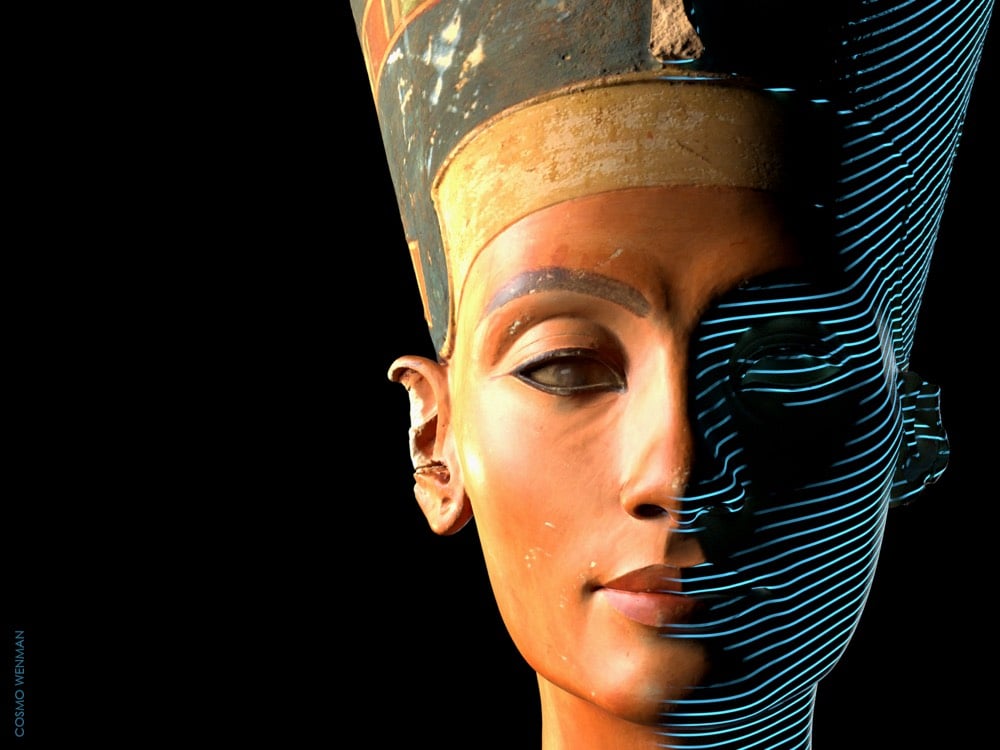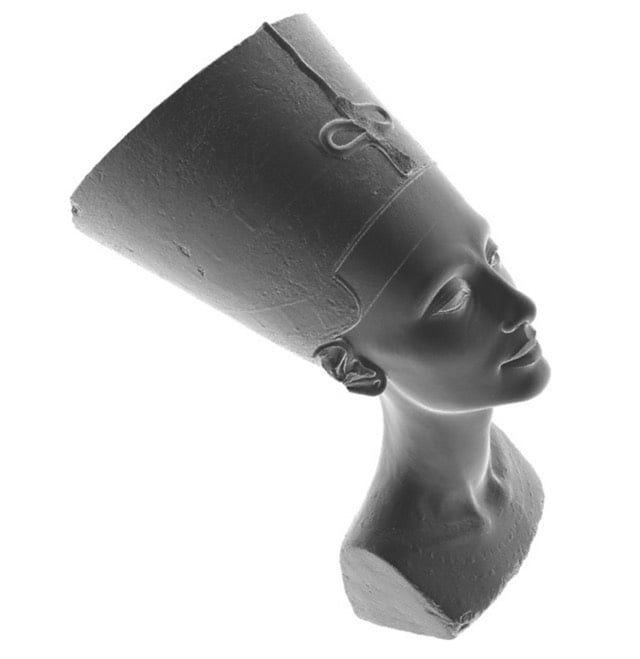An Official High-Resolution 3D Model of the Bust of Nefertiti Is Available for Download

The spectacular bust of Nefertiti, some 3300 years old, is currently housed at the Neues Museum in Berlin. A few years ago, high-resolution scans of the sculpture were released without permission of the museum. Now, after three years of pressure on the museum related to their claim on the bust, an official “full-color, 6.4 million-triangle 3D scan of the Bust of Nefertiti” has been released under a Creative Commons license. Cosmo Wenman has the story of how he eventually got the Prussian Cultural Heritage Foundation to release the scans.
For more than a decade, museums around the world have been making high-quality 3D scans of important sculptures and ancient artifacts. Some institutions, such as the Smithsonian and the National Gallery of Denmark, have forward-thinking programs that freely share their 3D scans with the public, allowing us to view, copy, adapt, and experiment with the underlying works in ways that have never before been possible. But many institutions keep their scans out of public view.
The Louvre, for example, has 3D-scanned the Nike of Samothrace and the Venus de Milo. The Galleria dell’Accademia in Florence 3D-scanned Michelangelo’s David. The Bargello has a scan of Donatello’s David. Numerous works by Auguste Rodin, including the Gates of Hell, have been scanned by the Musée Rodin in Paris. The Baltimore Museum of Art got in on the Rodin action when it scanned The Thinker. The Metropolitan Museum of Art has scans of works by Bernini, Michelangelo, and many others. But instead of allowing them to be studied, copied, and adapted by scholars, artists, and digitally savvy art lovers, these museums have kept these scans, and countless more, under lock and key.
In Berlin, the state-funded Egyptian Museum and Papyrus Collection has a high-quality, full-color 3D scan of the most iconic portrait sculpture ever produced, the 3,364-year-old Bust of Nefertiti. It has held this artifact since 1920, just a few years after its discovery in Amarna, Egypt; Egypt has been demanding its repatriation ever since it first went on display. The bust is one of the most copied works of ancient Egyptian art, and has become a cultural symbol of Berlin. For reasons the museum has difficulty explaining, this scan too is off-limits to the public.
Rather, it was off-limits. I was able to obtain it after a 3-year-long freedom of information effort directed at the organization that oversees the museum.
(via open culture)






Stay Connected